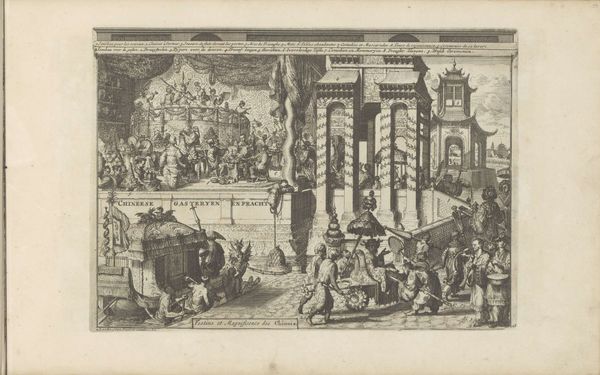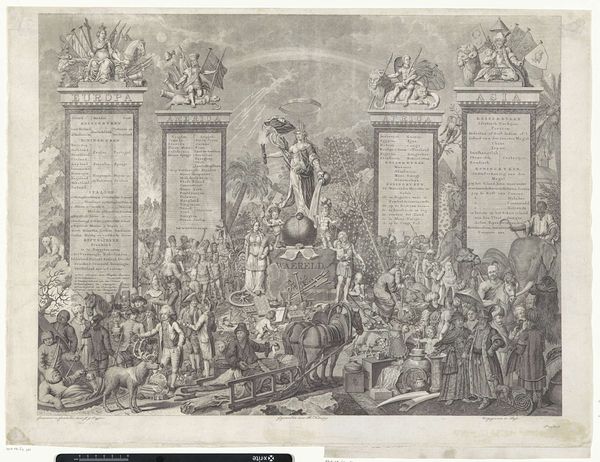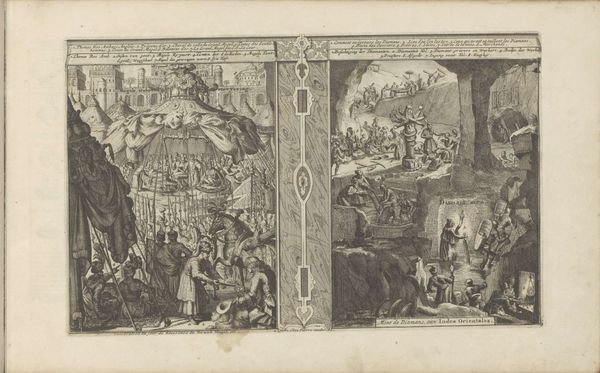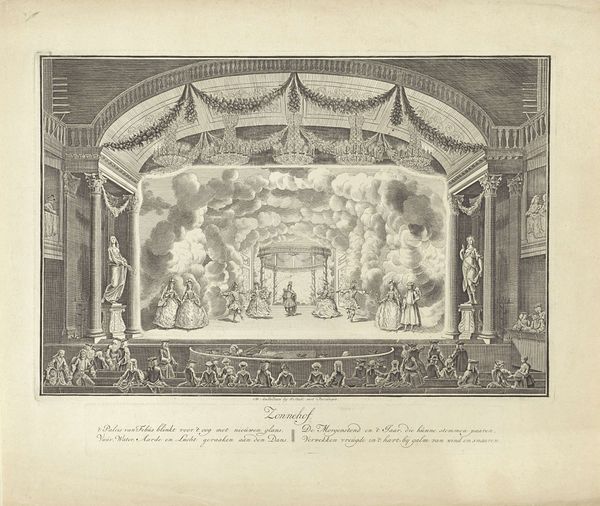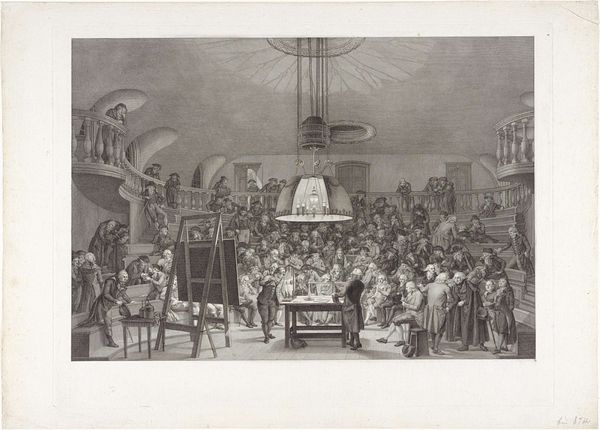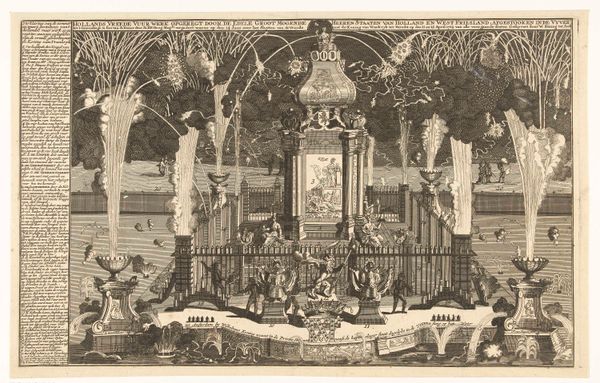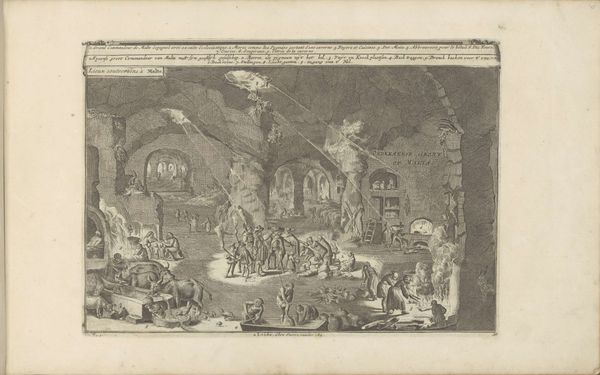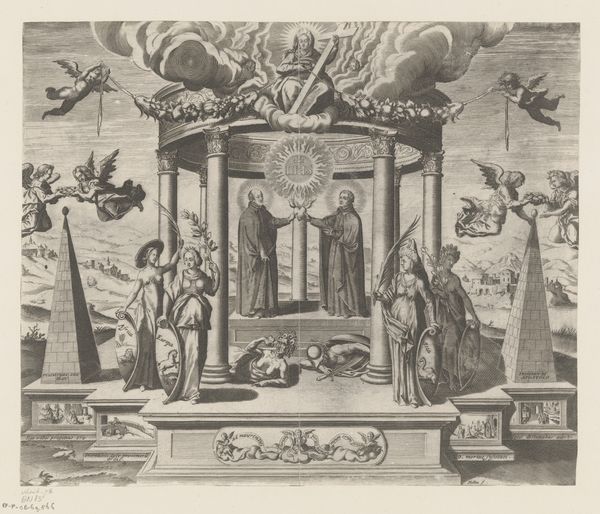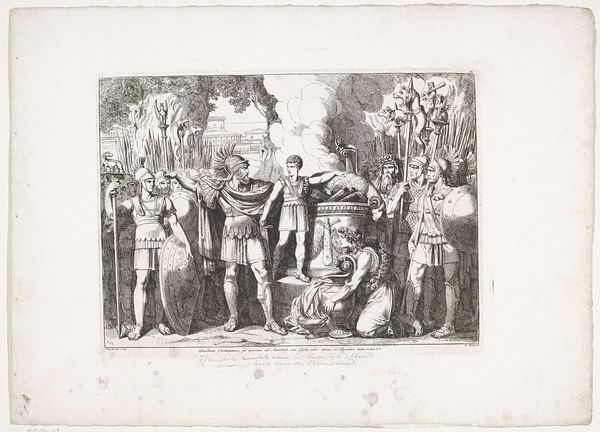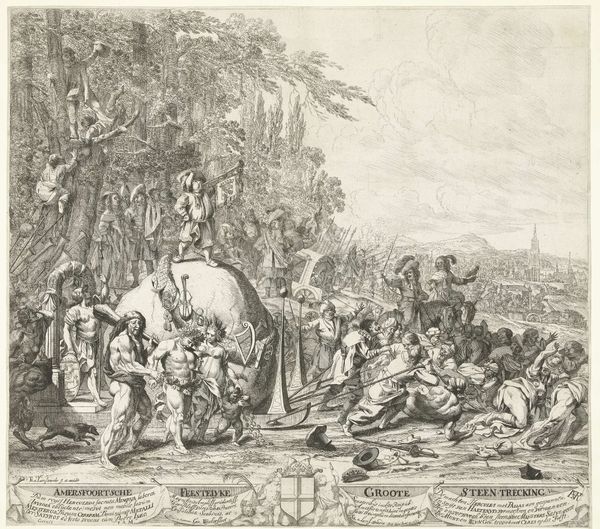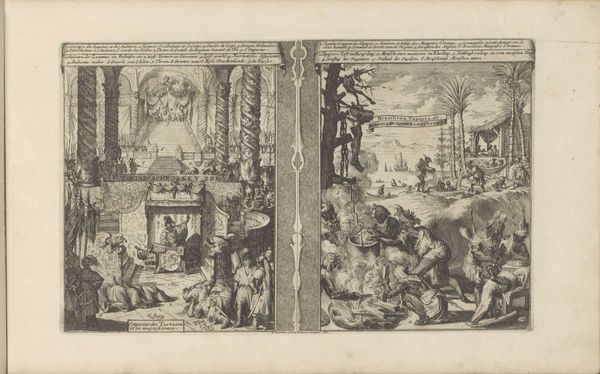
print, engraving
#
neoclacissism
#
allegory
# print
#
old engraving style
#
landscape
#
classical-realism
#
figuration
#
form
#
classicism
#
line
#
cityscape
#
history-painting
#
engraving
Dimensions: height 562 mm, width 718 mm
Copyright: Rijks Museum: Open Domain
Curator: Before us is "Allegory of the Beginning of the 19th Century," a print created by Theodoor Koning in 1800, currently residing at the Rijksmuseum. It is an excellent example of neoclassical aesthetics, meticulously rendered as an engraving. Editor: My initial reaction is one of slight visual overload. The composition seems densely packed, almost as if trying to encapsulate an entire era within a single frame. Curator: Indeed, the density speaks to its allegorical purpose. Note the strategic deployment of classical architectural elements—the obelisk, the temple ruin, the circular pavilion—each imbued with historical and symbolic weight. The linear precision achieved through the engraving process further accentuates the order and rationality prized by neoclassicism. Editor: But let’s consider the actual engraving process. How did Koning's choice of technique—those precise lines cut into a metal plate, inked, and pressed onto paper—affect the dissemination of this allegorical vision? Was it intended for a broad audience or a more elite, educated class familiar with classical references? Curator: The reproducibility of the engraving undeniably broadened its potential viewership. It allowed Koning to circulate this idealised vision of the dawn of the 19th century beyond the confines of a single painted canvas. However, the intricate detail also speaks to a cultivated audience capable of decoding its symbolic language. Note how the figures populate a fabricated, rather than found landscape. Editor: Agreed, but it is essential to think about who these figures *are*. Are they representations of abstract ideals or stand-ins for actual working-class laborers that the artist engaged during his process of creating the work? The image speaks to more than the symbolic, and points directly to production of culture and possibly, society itself at the precipice of the Industrial Revolution. Curator: Perhaps we are seeing both, intertwined. The classical garb and idealized forms represent abstract concepts like progress and enlightenment. But their inclusion within this bustling, almost chaotic scene acknowledges, to a degree, the material realities that underpinned those lofty ideals. Editor: So, the means of production shaped not just the physical image but its reception, reaching those who engaged in, or at least knew about the physical labor in society, even if it celebrated them. A complex dynamic. Curator: Precisely. And by recognizing that interplay, we enrich our appreciation of its formal arrangement. Editor: Ultimately, thinking about the work within the means in which it was created gives a more full impression of its effect.
Comments
No comments
Be the first to comment and join the conversation on the ultimate creative platform.

